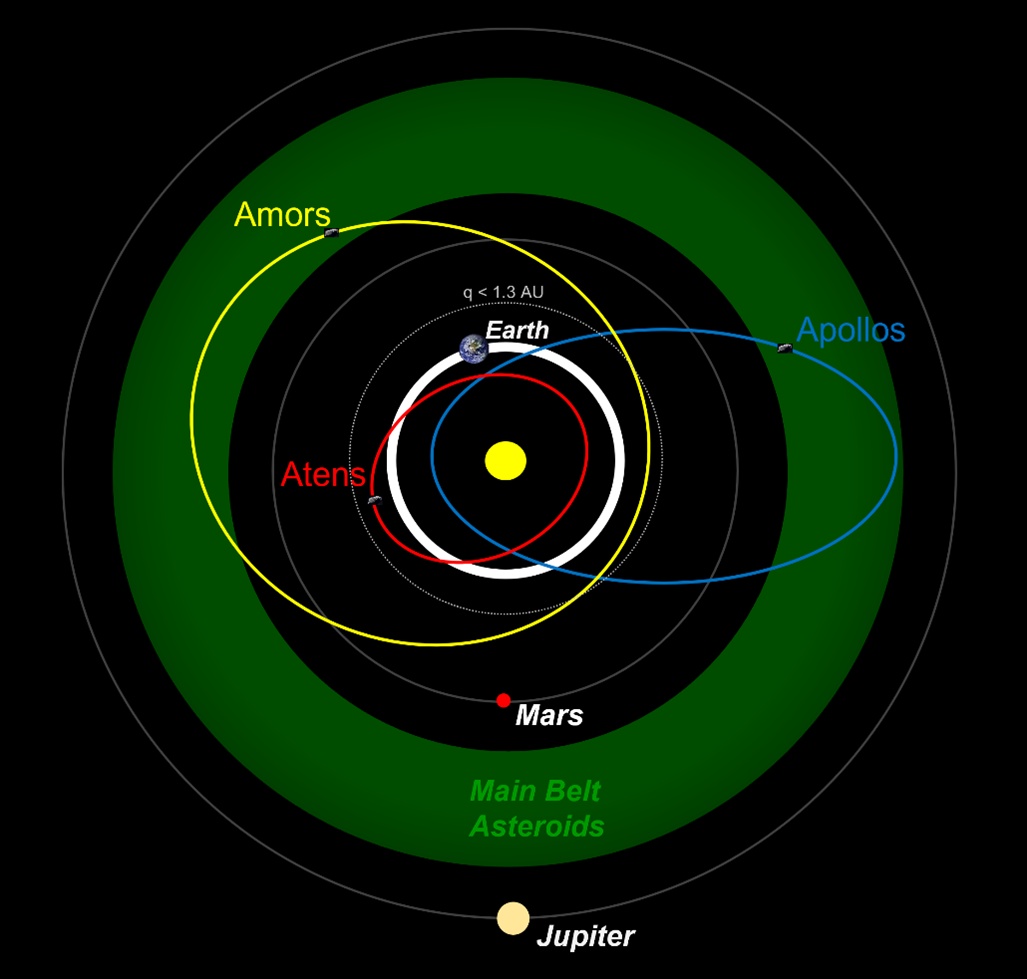Be sure to fill out the form HERE to be credited as a measurer for any new discoveries!
Research
Come help us discover new asteroids!
The Catalina Sky Survey is a NASA-funded project dedicated to discovering and tracking near-Earth asteroids. Since 1998 we have discovered thousands of near-Earth asteroids and many more main-belt asteroids. We collect an enormous volume of image data. Although we have state-of-the-art cameras, detection software, and a small team of full-time professional observers, we lack capacity to identify and verify all objects of interest. We need your help! Join us to find the unreported main-belt and near-Earth asteroids that slip through the digital cracks of our detection system.
Our project invites you to look through our nightly archival images and scan them for possible new asteroids…. actual new small worlds within our solar system! Our asteroid detection software has systematically identified possible candidates for you to validate. Most of these detections are false positives. We need you to spot the real asteroids among the data hiccups. As a member of the Daily Minor Planet team, you will be sifting through asteroid candidate detections and differentiating false detections from possible real detections. New worlds await your discovery!
What are asteroids?
Asteroids, also known as minor planets, are the rocky remnants that formed the terrestrial planets. Although most are rocky bodies, some are metallic, and others are a mixture of metal and rock. Some asteroids are solid, while others are loose rubble piles weakly held together by gravity. Asteroids range in size from about 1-meter across to hundreds of kilometers in diameter. As you might guess, the largest asteroids reflect more light and have all been discovered; smaller asteroids are more numerous and more elusive. Many await discovery – maybe by you! Most asteroids reside within the asteroid belt – these are known as main-belt asteroids. The asteroid belt lies between the orbits of Mars and Jupiter and most asteroids within this belt orbit the sun harmlessly, never crossing the paths of the major planets. Others have orbits that can bring them into close proximity to Earth. We call these near-Earth asteroids, or NEAs. In many cases NEAs have orbits that intersect Earth’s orbit. The diagram below shows the three primary NEA orbital families: the amors, the Apollos, and the Atens.

There are billions of main belt asteroids (MBAs) that reside within orbits between Mars and Jupiter. Over deep time, the influence of solar radiation nudges some MBAs into the grasp of Jupiter’s powerful gravitational grip which can then slowly steers them into planet crossing orbits, some becoming new near-Earth asteroids. Near-Earth asteroids (NEAs) all have orbits that bring them within 1.3 AU from the sun.
Why is the study of asteroids important?
There are many reasons to study asteroids. Here are three that motivate our work and this project.
While the probability of a large asteroid colliding with Earth is extremely low, it is possible, and the consequences could be catastrophic. (You can read more about planetary defense here.) Therefore, the Catalina Sky Survey and similar projects are scanning the skies night-by-night to identify near-Earth asteroids and track them.
Second, in addition to displaying a wide range of sizes, asteroids show incredible variation in composition, shape, density, and orbital families. Collectively these variations carry clues about the structure, composition, and formational history of the Solar System. The more we understand about the distribution of and variation among asteroids, the better we can reconstruct the evolution of the Solar System, including tracing the very building blocks of life-essential elements and compounds including water which you can also hunt for at Active Asteroids.
Third, although asteroids can pose a threat to life on Earth, paradoxically they will be essential for humanity’s pursuit to explore, live, and work in space. Many asteroids are extremely rich in metals and mineral resources that will help us to power and build our future in space. Most notably, asteroids containing water will be mined to produce rocket fuel to service space operations. In fact, the near-Earth asteroids will play a vital role in providing support for space exploration by virtue of the fact that they are periodically ‘near-Earth’….they come to us!
How our asteroid detection system works:
Our telescopes are equipped with state-of-the-art electro-optical charged-couple device (CCD) cameras that acquire a sequence of 4 images of the same patch of the night sky, each image separated by about 6 minutes in time. After the images undergo some sophisticated calibrations and image processing steps, our moving object detection routine identifies objects that appear to be tracking against the background of the more distant and stationary starfield. These candidate objects are presented to observers (in this case, you!) who decide if the candidates are real or more likely a false positive. False positives may include dim background stars, noise in the digital image, cosmic rays, reflections within the optical system, star spikes, and occasional artificial satellite tracks, etc...
Our tutorial will illustrate what false positives look like and what real asteroids look like. With a little practice and patience, you may be the discoverer of a new world!